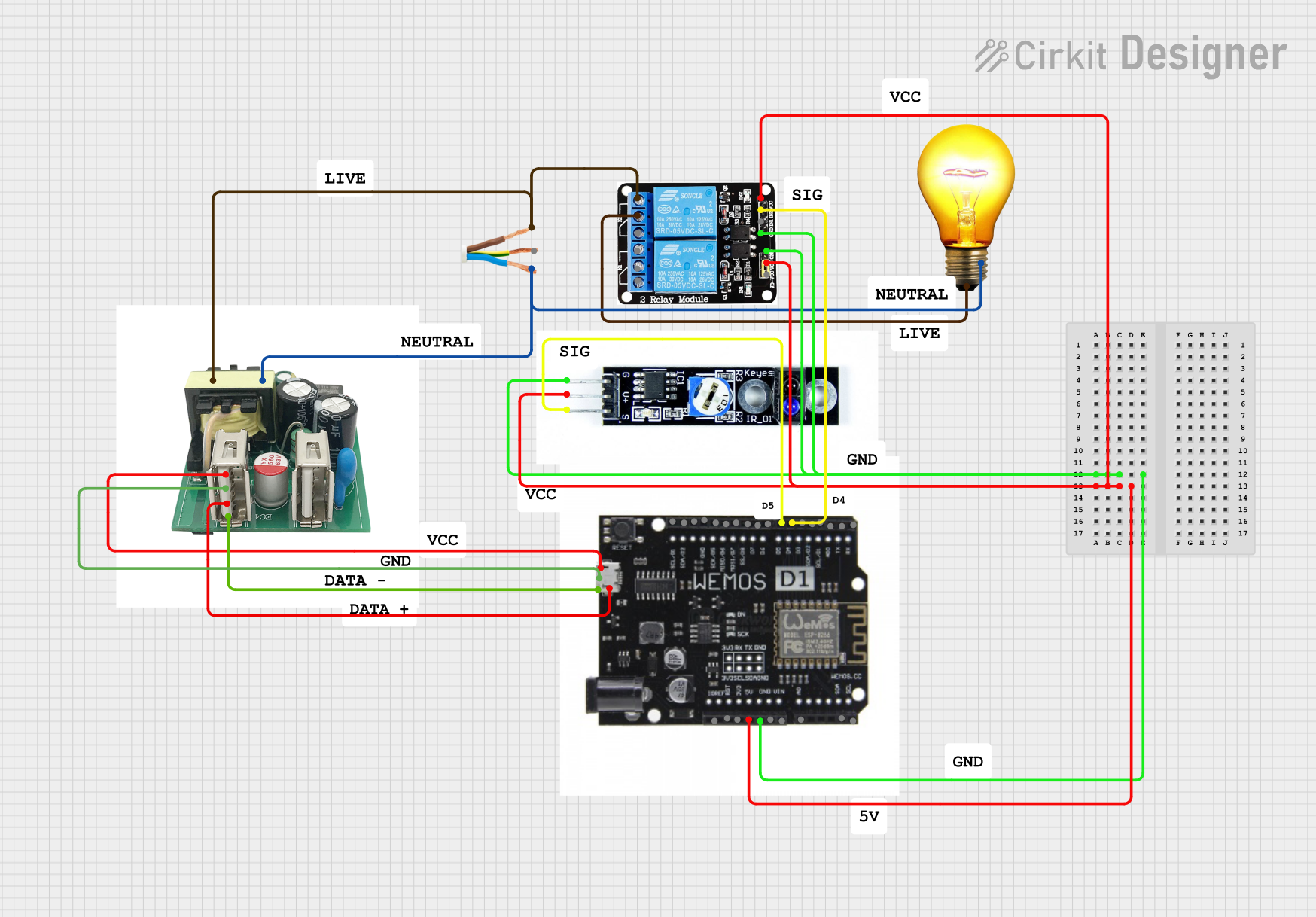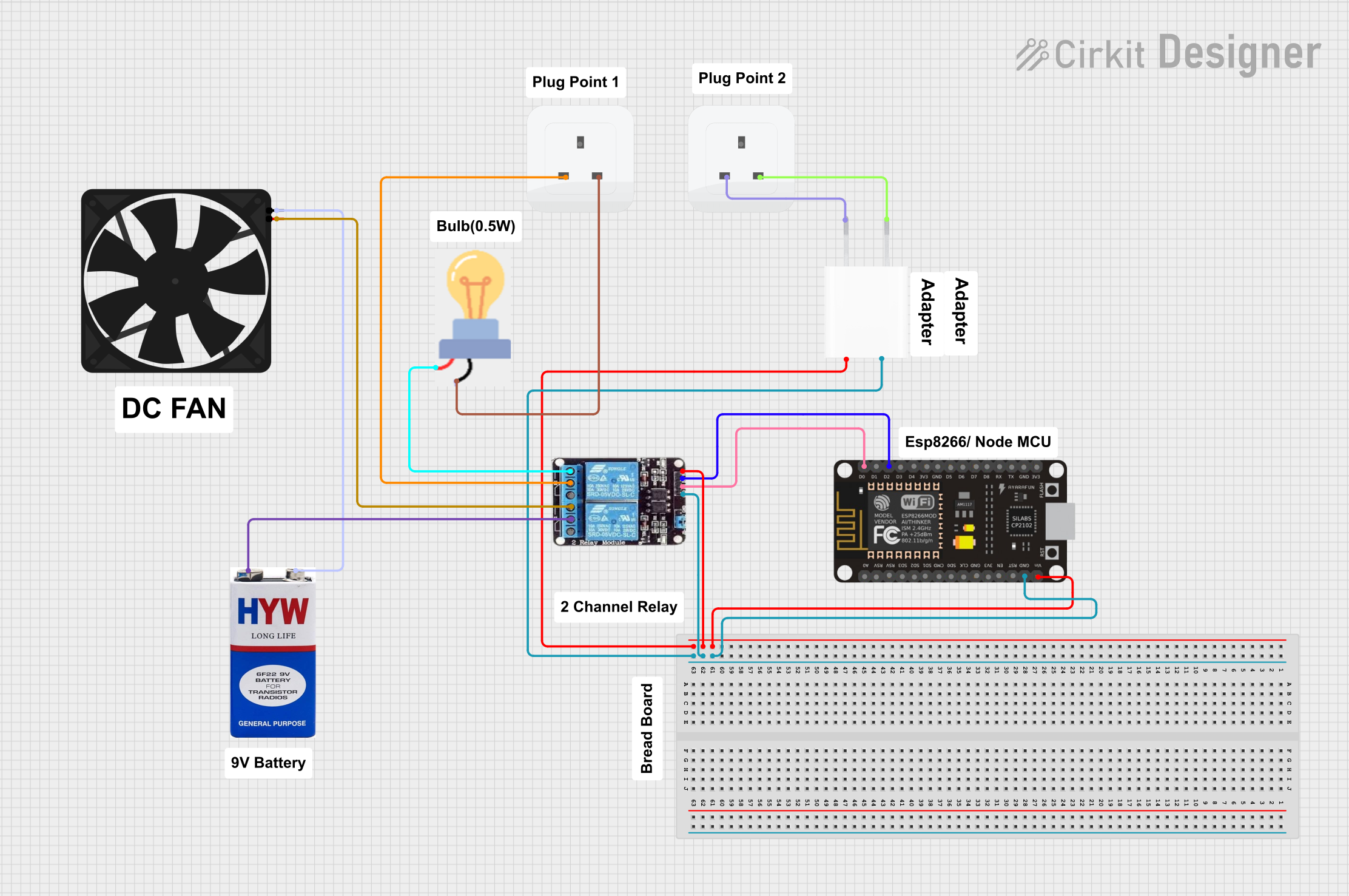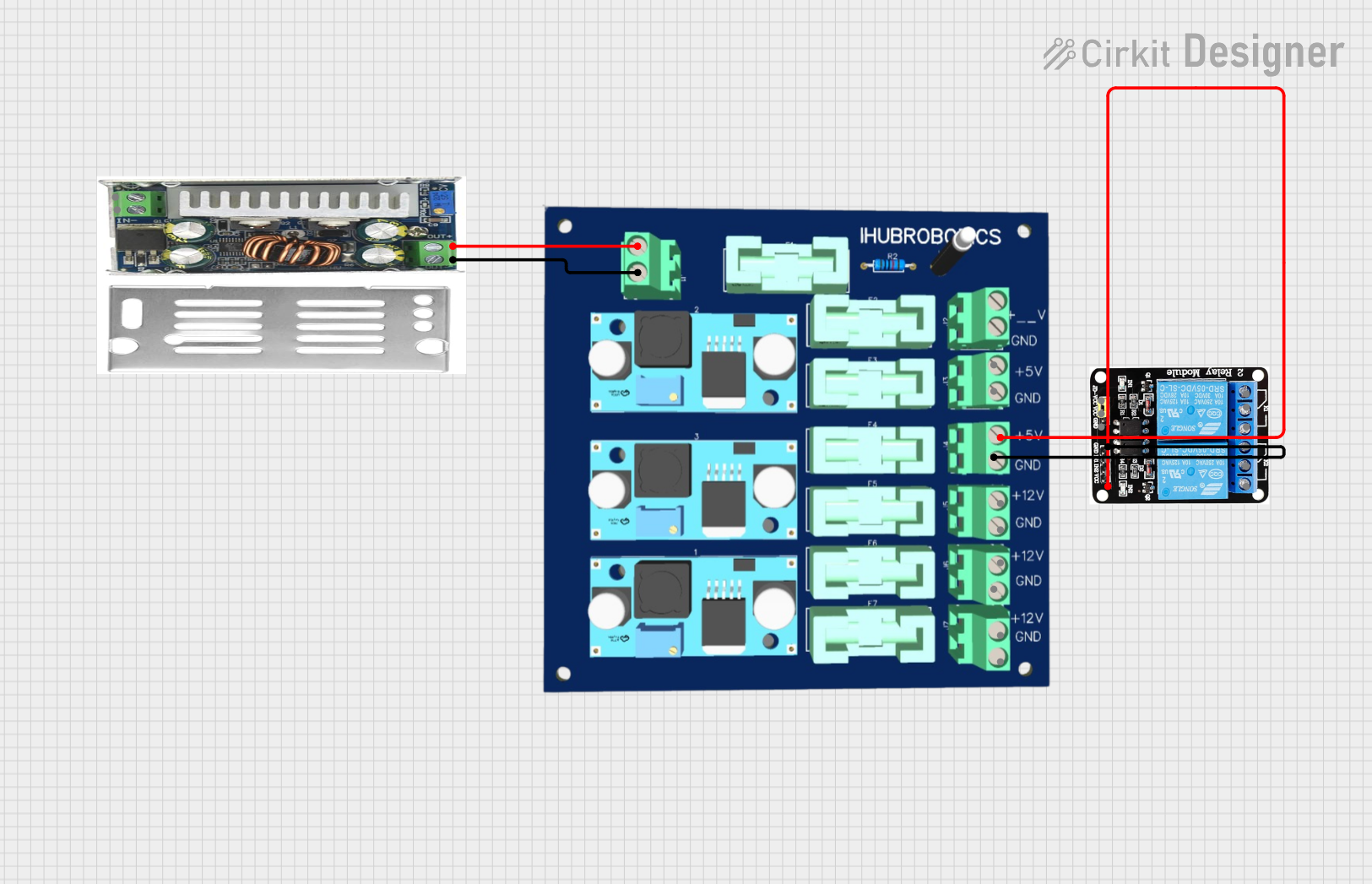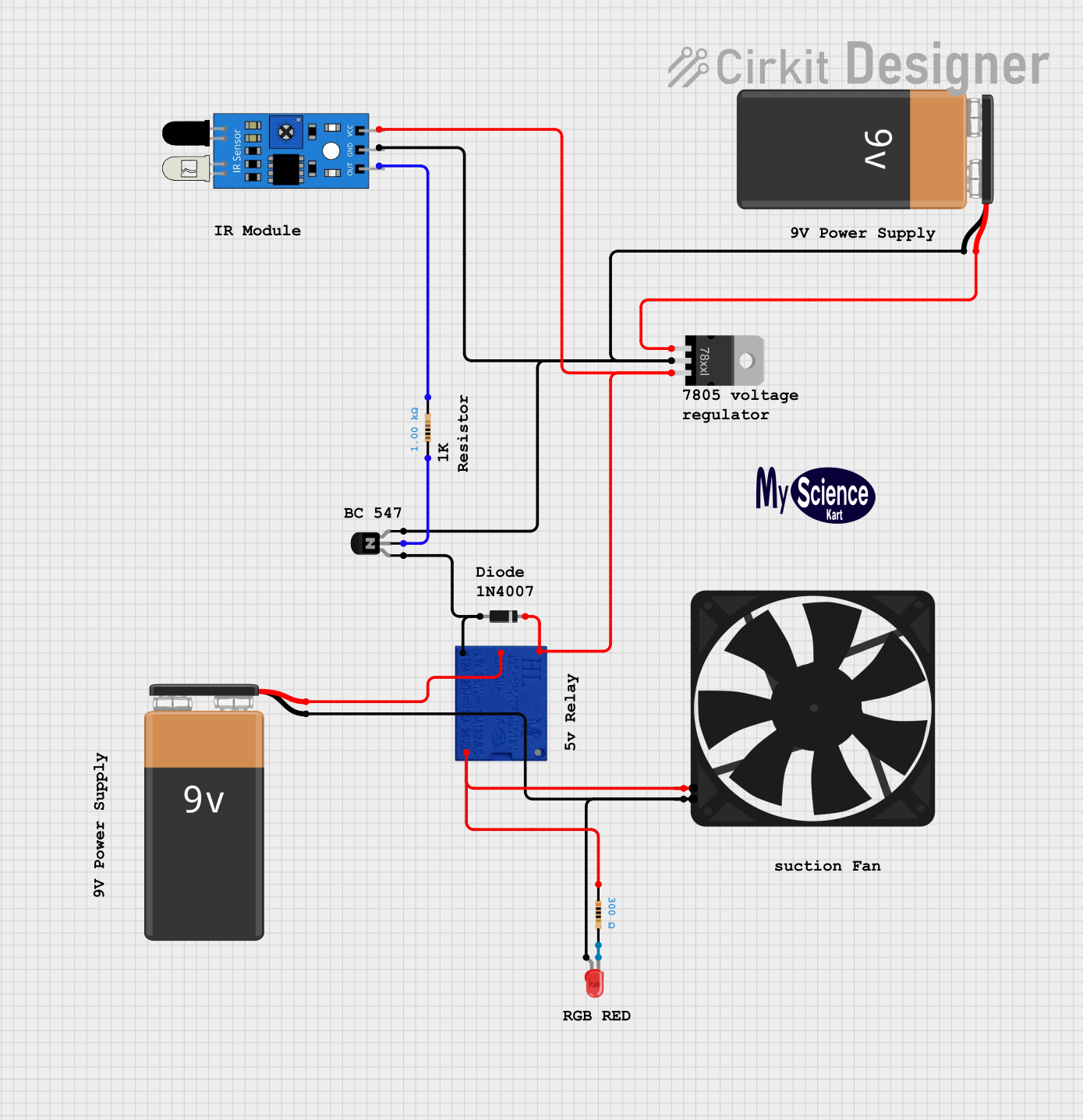
How to Use my2n relay: Examples, Pinouts, and Specs

 Design with my2n relay in Cirkit Designer
Design with my2n relay in Cirkit DesignerIntroduction
The MY2N relay, manufactured by Omron (Part ID: MY2N Base), is an electromechanical switch designed to control high-voltage or high-current circuits using a low-voltage signal. It operates by energizing an electromagnetic coil, which mechanically opens or closes its internal contacts. This relay is widely used in automation, industrial control systems, and home appliances due to its reliability and versatility.
Explore Projects Built with my2n relay

 Open Project in Cirkit Designer
Open Project in Cirkit Designer
 Open Project in Cirkit Designer
Open Project in Cirkit Designer
 Open Project in Cirkit Designer
Open Project in Cirkit Designer
 Open Project in Cirkit Designer
Open Project in Cirkit DesignerExplore Projects Built with my2n relay

 Open Project in Cirkit Designer
Open Project in Cirkit Designer
 Open Project in Cirkit Designer
Open Project in Cirkit Designer
 Open Project in Cirkit Designer
Open Project in Cirkit Designer
 Open Project in Cirkit Designer
Open Project in Cirkit DesignerCommon Applications and Use Cases
- Industrial automation systems
- Motor control circuits
- Home appliances (e.g., HVAC systems)
- Signal isolation between high- and low-voltage circuits
- Power distribution and switching
Technical Specifications
Key Technical Details
- Manufacturer: Omron
- Part ID: MY2N Base
- Coil Voltage: 12V DC, 24V DC, 110V AC, or 220V AC (varies by model)
- Contact Configuration: DPDT (Double Pole Double Throw)
- Contact Rating: 5A at 250V AC or 30V DC
- Coil Resistance: Varies by voltage (e.g., 12V DC model: ~160Ω)
- Dielectric Strength: 2,000V AC for 1 minute (between coil and contacts)
- Operating Temperature: -40°C to 70°C
- Mounting Type: Plug-in base or PCB mount
- LED Indicator: Built-in (for some models)
Pin Configuration and Descriptions
The MY2N relay has 8 pins, typically arranged in a rectangular configuration. Below is the pinout description:
| Pin Number | Name | Description |
|---|---|---|
| 1 | Coil (+) | Positive terminal of the electromagnetic coil |
| 2 | Coil (-) | Negative terminal of the electromagnetic coil |
| 3 | Common (Pole 1) | Common terminal for the first set of contacts |
| 4 | NC (Pole 1) | Normally Closed terminal for the first set of contacts (connected when coil is off) |
| 5 | NO (Pole 1) | Normally Open terminal for the first set of contacts (connected when coil is on) |
| 6 | Common (Pole 2) | Common terminal for the second set of contacts |
| 7 | NC (Pole 2) | Normally Closed terminal for the second set of contacts (connected when coil is off) |
| 8 | NO (Pole 2) | Normally Open terminal for the second set of contacts (connected when coil is on) |
Usage Instructions
How to Use the MY2N Relay in a Circuit
- Power the Coil: Connect the coil terminals (pins 1 and 2) to a DC or AC voltage source that matches the relay's rated coil voltage.
- Control the Load: Connect the load to the appropriate contact terminals (pins 3-8) based on the desired switching configuration:
- Use the NC (Normally Closed) terminal if the load should be powered when the relay is off.
- Use the NO (Normally Open) terminal if the load should be powered when the relay is on.
- Isolation: Ensure proper electrical isolation between the control circuit (coil) and the load circuit (contacts).
- Mounting: Secure the relay in a compatible socket or PCB mount.
Important Considerations and Best Practices
- Voltage Matching: Ensure the coil voltage matches the relay's rated voltage to avoid damage.
- Contact Ratings: Do not exceed the relay's contact current and voltage ratings to prevent overheating or failure.
- Flyback Diode: When using a DC coil, add a flyback diode across the coil terminals to protect the driving circuit from voltage spikes.
- LED Indicator: If the relay has a built-in LED, use it to verify coil activation.
- Testing: Test the relay in a low-power circuit before integrating it into a high-power application.
Example: Connecting MY2N Relay to an Arduino UNO
Below is an example of how to control the MY2N relay using an Arduino UNO:
// Example: Controlling MY2N Relay with Arduino UNO
// Pin 7 of Arduino is used to control the relay
const int relayPin = 7; // Define the pin connected to the relay's coil
void setup() {
pinMode(relayPin, OUTPUT); // Set relay pin as output
digitalWrite(relayPin, LOW); // Ensure relay is off at startup
}
void loop() {
digitalWrite(relayPin, HIGH); // Turn relay on
delay(1000); // Keep relay on for 1 second
digitalWrite(relayPin, LOW); // Turn relay off
delay(1000); // Keep relay off for 1 second
}
Note: Use a transistor or relay driver circuit to interface the Arduino with the MY2N relay, as the Arduino's GPIO pins cannot directly supply enough current to drive the relay coil.
Troubleshooting and FAQs
Common Issues and Solutions
Relay Not Activating
- Cause: Incorrect coil voltage or insufficient current.
- Solution: Verify the power supply voltage and current match the relay's specifications.
Contacts Not Switching
- Cause: Faulty wiring or damaged contacts.
- Solution: Check the wiring and ensure the load is connected to the correct terminals (NC or NO).
Coil Overheating
- Cause: Prolonged overvoltage or excessive current.
- Solution: Use a power supply with the correct voltage rating and avoid exceeding the coil's rated current.
Voltage Spikes in Control Circuit
- Cause: Inductive kickback from the relay coil.
- Solution: Add a flyback diode across the coil terminals (e.g., 1N4007 for DC coils).
FAQs
Q: Can the MY2N relay switch both AC and DC loads?
- A: Yes, the MY2N relay can switch both AC and DC loads, provided the voltage and current ratings are not exceeded.
Q: Does the MY2N relay require a heatsink?
- A: No, the MY2N relay does not require a heatsink. However, ensure proper ventilation to prevent overheating.
Q: Can I use the MY2N relay for PWM signals?
- A: No, the MY2N relay is not suitable for high-frequency switching. Use a solid-state relay (SSR) for PWM applications.
Q: How do I know if the relay is working?
- A: If the relay has a built-in LED, it will light up when the coil is energized. You can also hear a clicking sound when the relay switches.
This concludes the documentation for the Omron MY2N relay. For further assistance, refer to the manufacturer's datasheet or contact technical support.